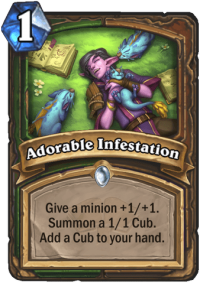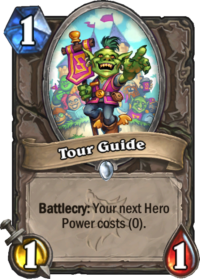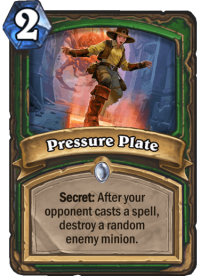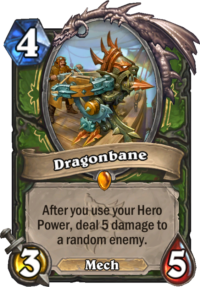Our budget Secret Face Hunter deck list & guide for the Scholomance Academy expansion will teach you how to play this budget list. This guide includes Mulligans, Gameplay Strategy, Card Substitutions, and Combos/Synergies!
Introduction to Budget Secret Face Hunter

At this point you’re probably seeing a pattern, but yeah, sadly budget decks are usually aggressive – most of the slower builds require at least a few Epics / Legendaries to work, while it’s much easier to build a faster deck without them. In this case, I’ve decided to go for no Epics either event though our budget rules allow up to 2 per deck, simply because they aren’t really necessary.
Face Hunter has pretty much always been the cheapest Hunter deck you can play, with very low curve and a straightforward game plan – killing your opponent as quickly as possible. And it still is – this time with a Secret flavor. It’s also another build that is close to being full, competitively-viable list, which is great news for those who don’t have a lot of Dust to spend. Scholomance Academy has really boosted the deck, with 10 new cards from that set present in this list.
The build is based on Maur1’s deck!
Check out Hearthstone Budget Decks & Guides for All 10 Classes!
Budget Secret Face Hunter Deck List
Budget Secret Face Hunter Mulligan Guide
Higher Priority (Keep every time)
- 1-drops – As an aggressive deck, you always want to open with a 1-drop. This build runs four different ones. Dwarven Sharpshooter is the best one to get overall, with solid stats and an effect that can come handy at times. Tour Guide can be even better, but only if you also have Phase Stalker. Intrepid Initiate is great if you have a way to trigger it, like starting with a Coin. And Wolpertinger is probably the weakest, but it’s not bad by any means – 2x 1/1 on T1 is just solid. Keep the better ones as a higher priority, but if you don’t have anything else, Wolpertinger will also do.
- Phase Stalker – The bread and butter of this deck, the main reason to go for a Secret build. Secrets aren’t that great if you draw them, but they’re amazing if you pull them from your deck for free – which Phase Stalker does.
Lower Priority (Keep only if certain conditions are met)
- Adorable Infestation – The card is great, but it’s not a 1-drop. Keep it only if you already have another 1-drop in hand, so you have a minion to buff.
- DO NOT keep any Secrets or Voracious Reader!
Budget Secret Face Hunter Play Strategy

Face Hunter builds have benefited heavily from Scholomance Academy. Despite not getting any Secret synergies, the deck’s Secret package has got stronger. The reason is Tour Guide, a card that seemed to be underrated by many players, even though it can prove really useful in certain builds, such as this one. At the very base level, it’s similar to Leper Gnome. The upside is that you get the damage upfront and it can’t be Silenced etc. to negate it. The downside is that when you play Leper Gnome you can still HP on the same turn, which is 2 extra damage in the longer run. But that’s not really the point here – one of its biggest upsides is that you don’t need to Hero Power immediately. You can drop it on Turn 1, then play Phase Stalker on Turn 2 and THEN Hero Power. It activates Stalker’s effect on the same turn, pulling a Secret from your deck for free. It’s an amazing opener which lets you get value out of your Stalker immediately without waiting until Turn 4.
Another great addition which sees play in lots of aggressive builds is Voracious Reader. The card servers as a refill. As a Face Hunter, you quickly run out of steam and enter topdeck mode, heavily relying on your Hero Power to finish the game, and that doesn’t always work. With low curve and Voracious Reader, you can cycle through your deck much faster, finding the right cards to keep putting pressure or even straight up kill your opponent.
Cards like Adorable Infestation or Intrepid Initiate are simply good cards that work well in this deck, they don’t really have any specific synergies. Wolpertinger is also a solid 1-drop, but it has another upside – drawing it with Scavenger's Ingenuity doubles the buff. So for 3 mana, you end up with 2x 3/3 Beast on the board, a really good tempo push.
Similarly, Hyena Alpha gives a lots of stats for 4 mana, but in this case you need to have a Secret active. One of the reasons why it works quite well is that you play Secrets that trigger from a variety of different things, so there’s a chance that something will stick going into your Turn 4, and then Hyena is a powerful play. Another powerful Secret-synergy play is the good, old Eaglehorn Bow. Even at the base level, it’s not really that bad – 6 damage for 3 mana is something you might want to play anyway. However, in this deck it can easily be 9 or even 12 damage – your opponent will usually have to trigger your Secrets eventually, and then you gain extra Durability.

Why does the deck run Pressure Plate, you might ask? Well, it turns out that it’s actually decent in the current meta. It works really well against Druid’s Guardian Animals, immediately killing one of the minions they pull off. If you also have a Freezing Trap set up, then the swing turn they rely on to win the game is gone. Pressure Plate also works well against a couple of other decks, such as Pure Paladin, e.g. when they try to buff something with Blessing of Authority or after casting Libram of Hope on the empty board. Against Big Warrior, it clears the minion they summon with Commencement immediately, which normally would probably be a game over for you (the deck isn’t great at getting through big Divine Shielded Taunts). It can also stop a random Mozaki, Master Duelist combo in its tracks, but lets just say that the deck isn’t particularly hard to beat with Face Hunter anyway. Overall, there aren’t many board flood decks in the meta, while there are a couple of decks running big minions, so the card works well.
So that’s your game plan – you try to play on the curve, put a lot of stuff on the board, tempo out Secrets from your deck, synergize with them, refill the hand with Voracious Reader and – well – kill your opponent. While you have some cool synergies and interactions, your goal is still to deal as much damage as possible. Try to not trade unless it’s really good for you or it’s going to net you more damage in the long run (e.g. by preventing a minion from trading into another minion on your side of the board). Starting from around Turn 4-5, try to Hero Power every time you can (unless you have Reader, then you try to dump your hand to get full value from it). If your opponent stabilizes, heals up, you get bad draws – just concede and move to the next one. This is a fast deck and if you aren’t clearly winning by Turn 5-6, then it’s probably no use to waste your time.
Future Card Replacements for Secret Face Hunter

This Secret Face Hunter build is quite close to the full meta decks. There’s just a single card missing that you really, really want – Dragonbane. It has great synergy with your Hero Power and lets you push a lot extra damage. It’s also another card with amazing Tour Guide synergy – you can set up a free Hero Power on Turn 3 and then drop Dragonbane + HP on Turn 4, which is a very powerful play.
You can also consider adding Toxic Reinforcements if you own the card, although it’s no longer necessary like it was previously.
The cards you might cut in order to fit those are 1x Secret (e.g. Explosive Trap), Unleash the Hounds or 2x Hyena Alpha.
There’s also a consideration of Secrets you play. Right now, Pressure Plate + Freezing Trap combo works well because of the meta, but if the meta gets more board-flood and minion-trade oriented, then you might consider a 2nd Explosive Trap or Snake Trap.
Leave a Reply
You must be logged in to post a comment.

















The budget strategy articles have been very worthwhile.
Is the following subject worth a strategy article?
When and how to use Mindrender Illucia?
It seems there is a lot of complexity here involving not only when one’s own hand will be safe enough to pass over – but also when the opponent’s hand will be particularly vulnerable.
The challenge gets far more complex in the Priest mirror match where both sides have Mindrenders.
It seems even more complex when there are multiple bombs one is trying to protect as well as defuse.
The Highlander matchup has dual Zephrys, dual Dragonqueen Alexstrazas, dual Galakronds and dual Kronx’s.
There ought to be a way to think about maximizing Mindrender value and minimizing Mindrender risk in a world of multiple parallel threats.
It’s a really interesting topic for an article, we’ll definitely think about it! But for now we’re going to focus on the higher priority guides / updates, there’s always a lot to cover around new expansion releases 🙂